You have been seen in the breast clinic and your symptoms are thought likely to be musculoskeletal in nature. This is a common problem that will often present with pain and/or tenderness in the breast and armpit.
The symptoms will usually settle over a period of time but can be persistent in some women. Posture, activities of daily living and sports and exercise can all impact on the symptoms. For some women, other medical problems, such as arthritis, may also contribute. There isn’t always a clear cause for pain.
A programme of exercise can help by gently mobilising areas that have become stiff. It can also support strengthening muscles that have weakened over time. These benefits will build gradually over weeks to months.
This leaflet includes some exercises that have been found effective in helping to treat chest wall musculoskeletal symptoms presenting with breast pain.
With all exercises, start gently and gradually aim to extend what you can manage. We recommend performing these exercises daily. If you find your symptoms worsen, please see your General Practitioner for a review.
Other things you may find helpful include using topical heat therapy (microwave pillow heat pads or hot water bottles) and gentle massage of the neck and shoulder area. If using heat, ensure the pad is comfortable and not too hot. Some women find it helpful to use ice packs instead of, or as well as heat packs. It can be useful to alternate the two.
1. Open book
Lie on your side with one arm on top of the other stretched out in front of you.
Bring your upper arm up in an arc to finish with it behind you. Follow your hand with your eyes. Try to touch the floor behind you with your hand. Keep your knees together touching the floor.
Slowly return to the starting position. Do 5 on one side and 5 on the other side.
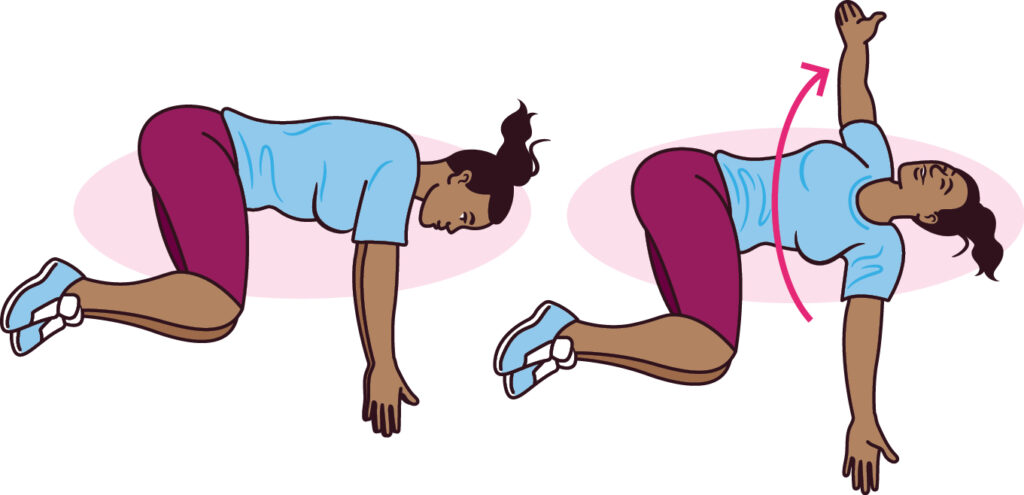
2. Standing pec stretch
Stand in a door frame with your hands on the frame, one above your head, and one at hip height.
Move your body forwards until you feel a stretch across your chest and hold for 5 breaths.
Alternate arms to stretch both sides.
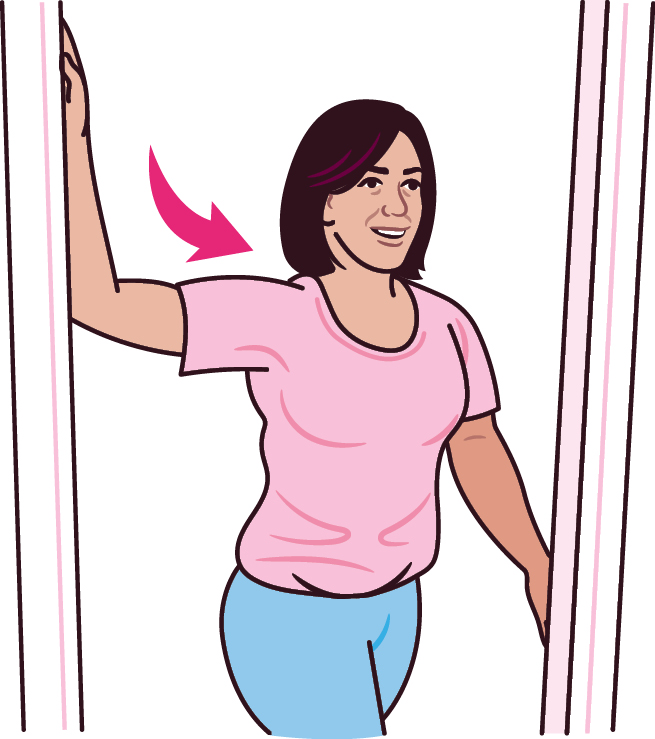
3. Corner stretch
Stand facing a corner with your left foot a few inches from the corner and your right foot about a couple of feet away.
Bend at the elbows and press your right hand into the right side of the wall, your left hand into the left at chest height.
Push forward until you feel a stretch in your chest and hold the position for 10 seconds.
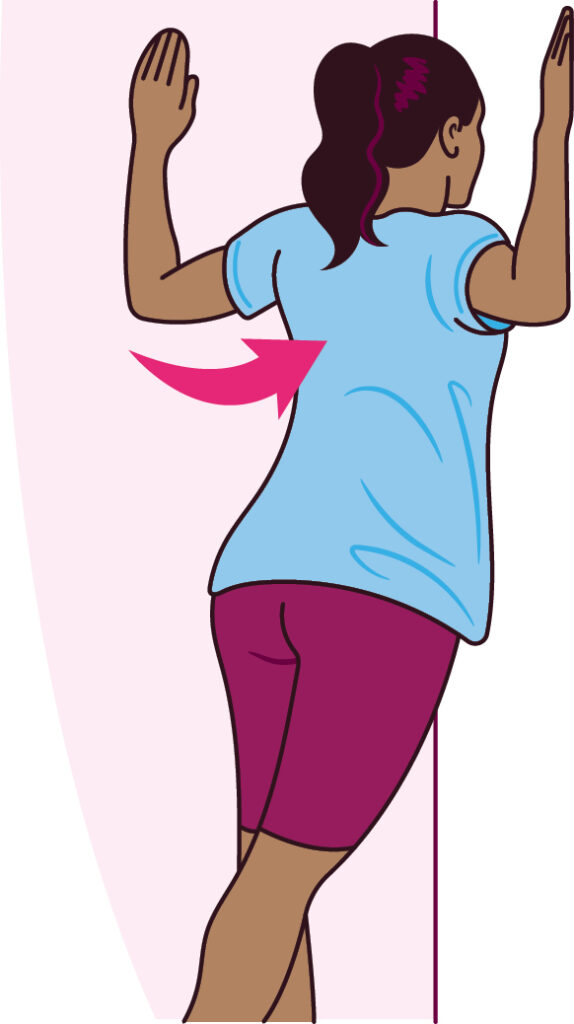
4. Hands behind the head stretch
Sit on a chair with both feet on the floor. This can also be done standing. Bring your hands behind your head and interlace your fingers.
Squeeze your shoulder blades together and push your chest out. You can vary the height of your hands on your head to intensify the stretch in either your shoulders or your chest.
Hold the pose for 5 to 10 breaths.
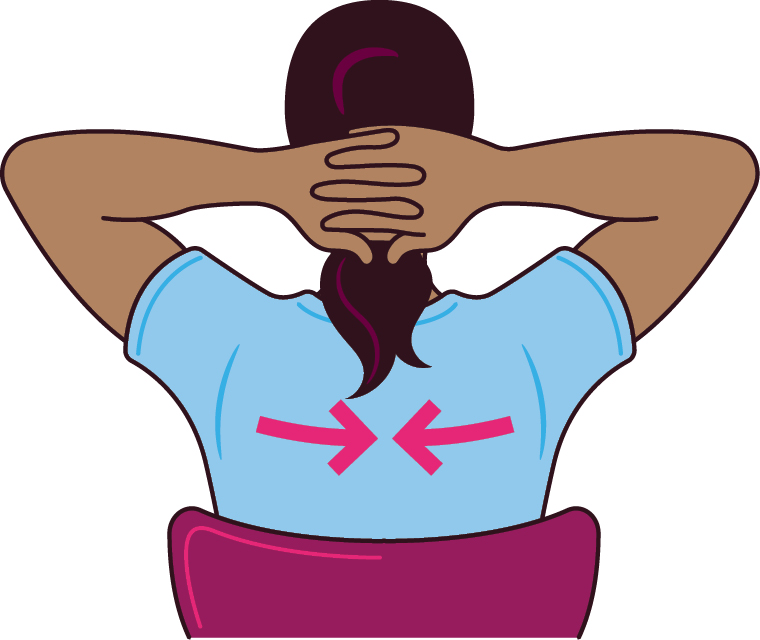
5. Active / assisted flexion
Either lying down or standing, slowly bring both arms up in front of you as far as you are able, pointing your thumbs up as you go.
Aim to get your hands high above your head. If one side is harder, you can use your other arm to help support it. Slowly lower your arms and repeat 5 to 10 times.
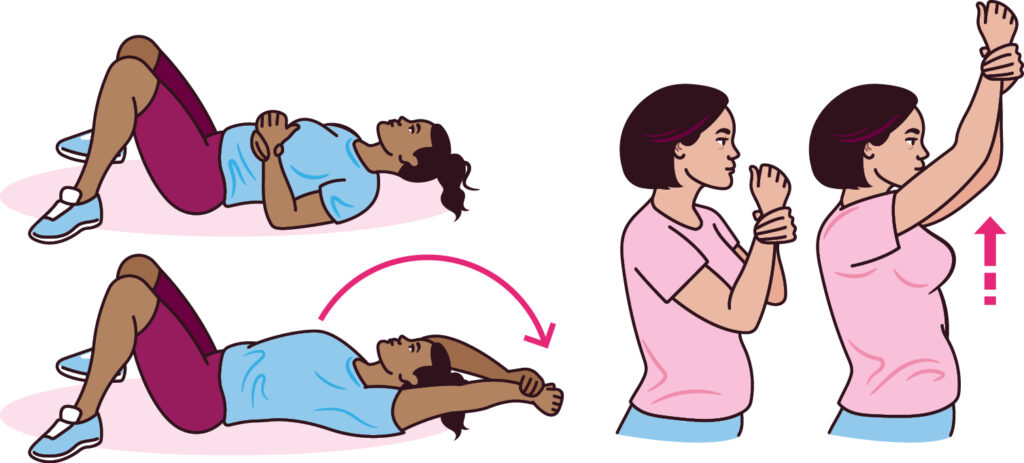
6. Downward dog
Press your hands into the wall or floor. Push your hips backwards as you bring your head down in between your arms, keeping a gentle bend in your arms and legs.
Feel a stretch from your armpits into your back and across your chest.
Hold for 10 seconds then slowly come back to upright. Repeat 3 to 5 times.
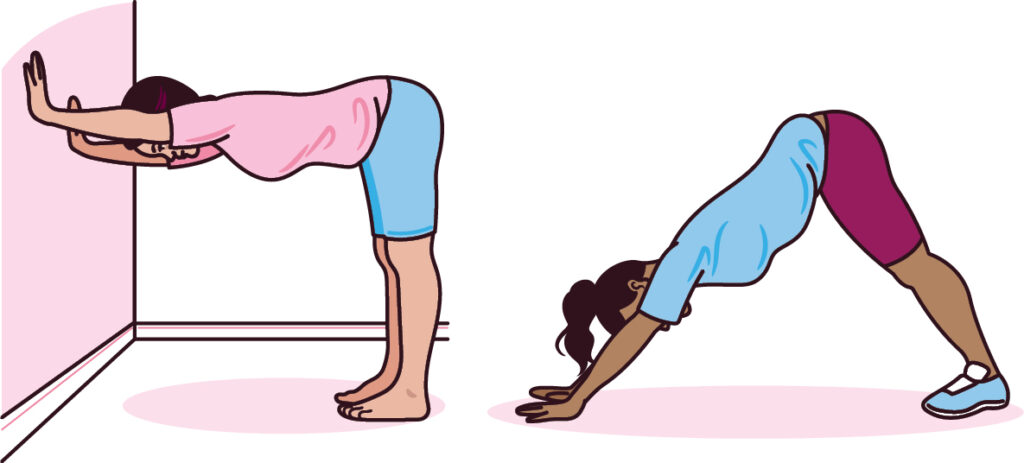
7. Abduction
Slowly bring both hands out to the side as far as you are able, aiming to get your hands high above your head.
Slowly bring them back to your sides.
Repeat this movement 5 to 10 times.
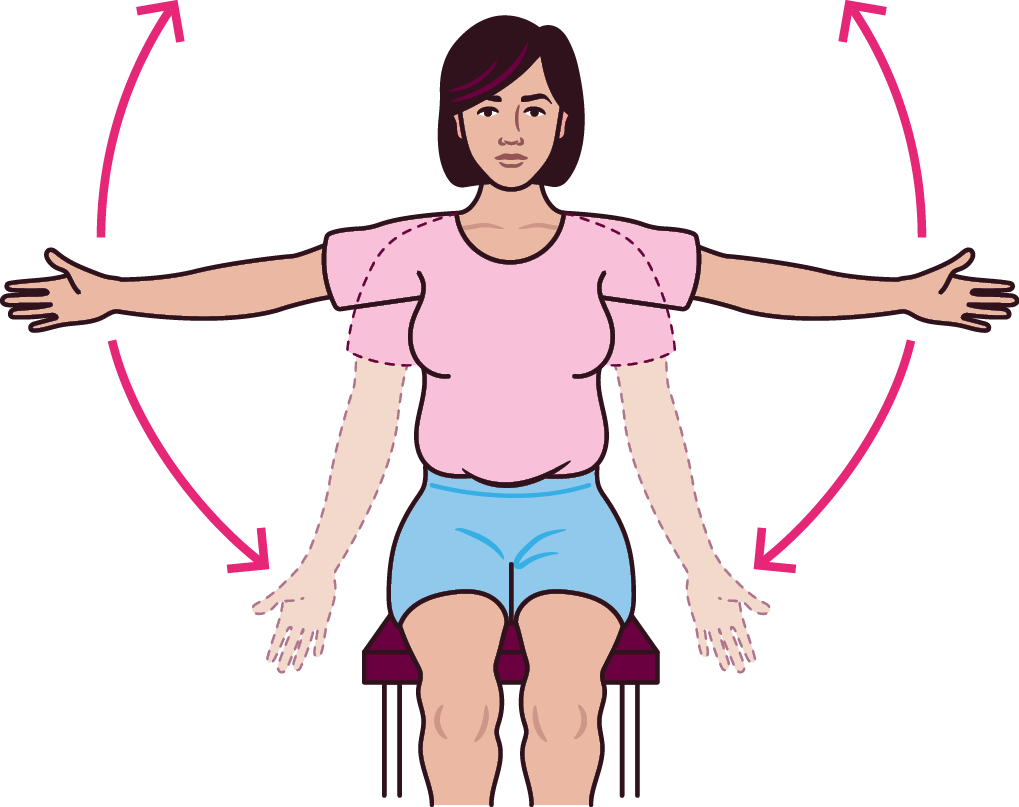
Another option if this is uncomfortable is to rest your hand on a wall at your side and gradually ‘walk’ your hand up and down the wall.
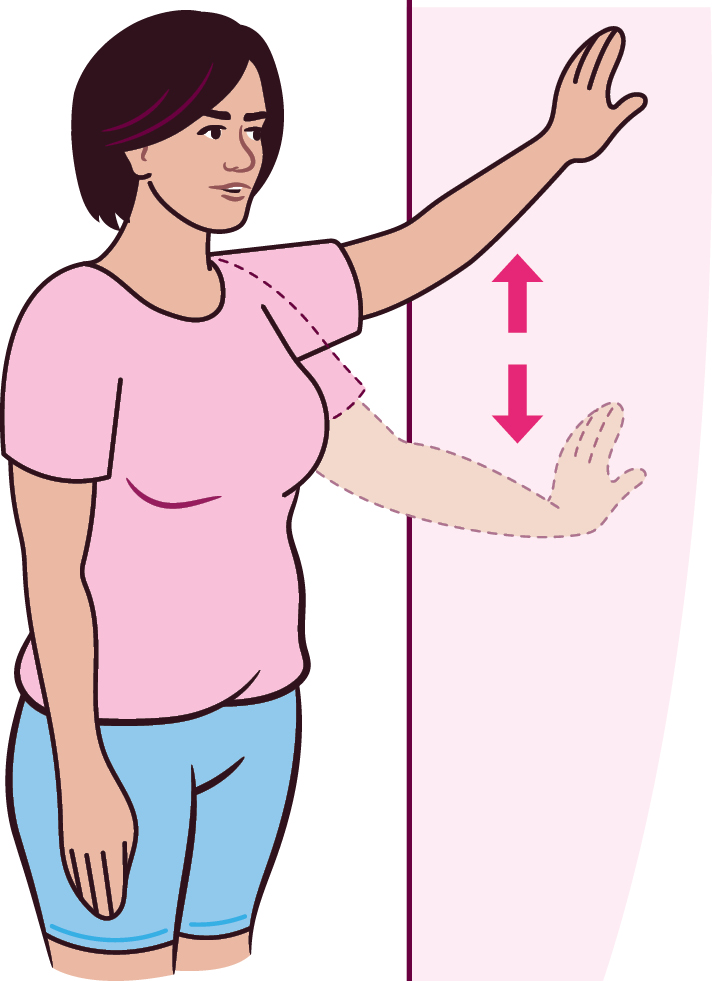
8. Abduction with lateral flexion
Bring one arm overhead and lean to the opposite side to stretch and strengthen your lateral trunk.
This can also be done with your hand on a wall.
Hold this pose for 5 breaths then repeat on the other side.
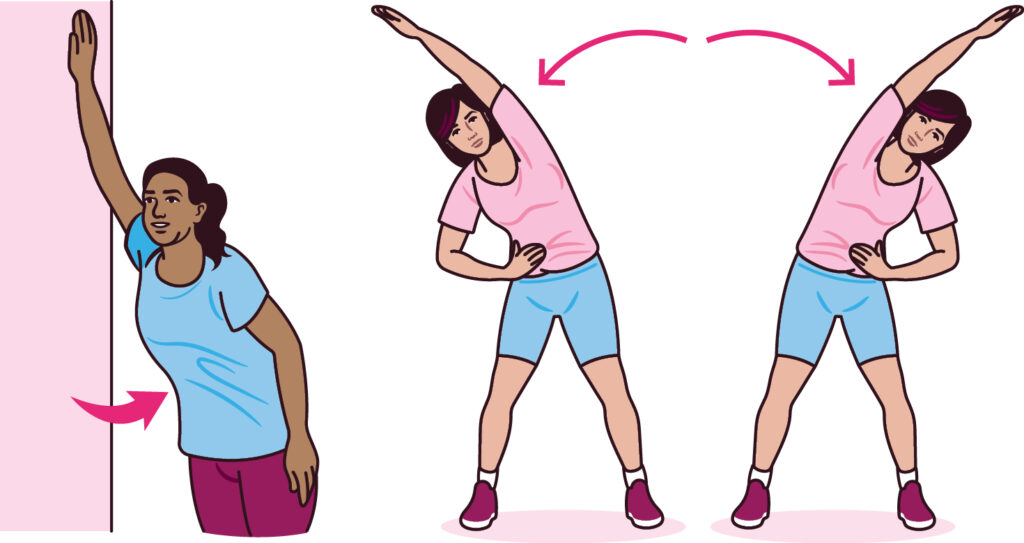
If you’re struggling to get your hand behind your head or behind your back, you may benefit from self-referring to physiotherapy.
You can ask to see a First Contact Physiotherapist at most GP surgeries, or your GP can refer you to be seen by the MSK physio team.